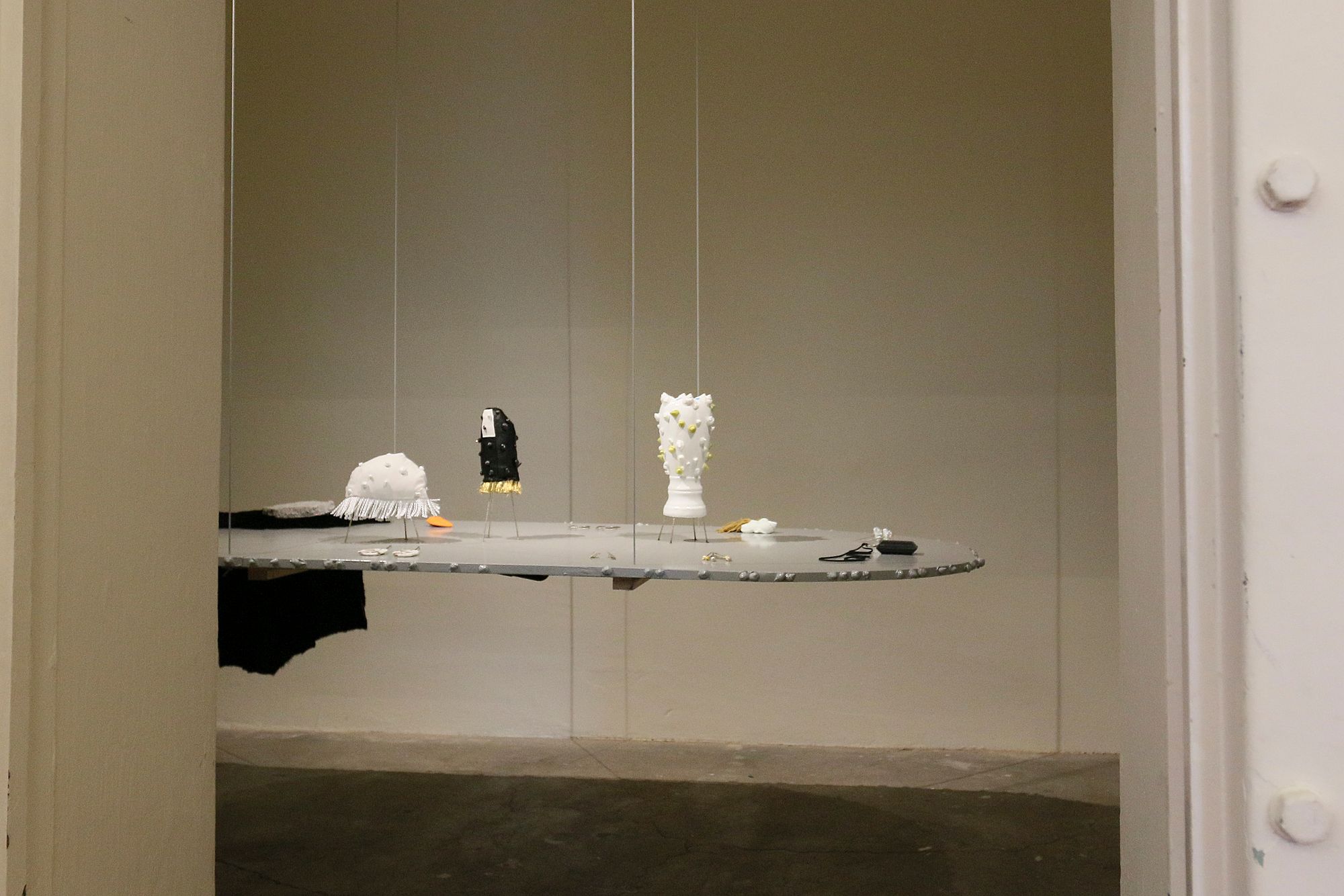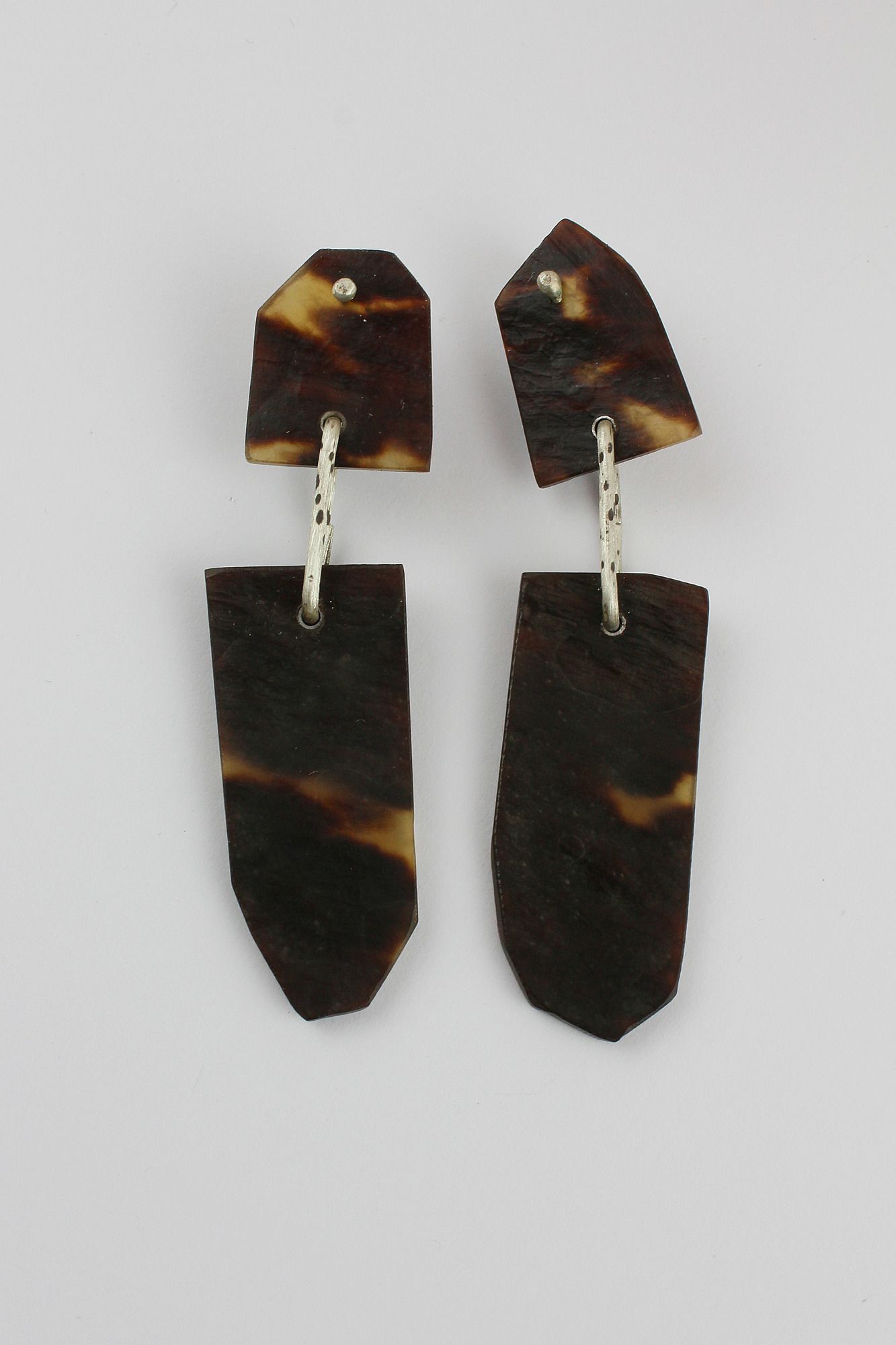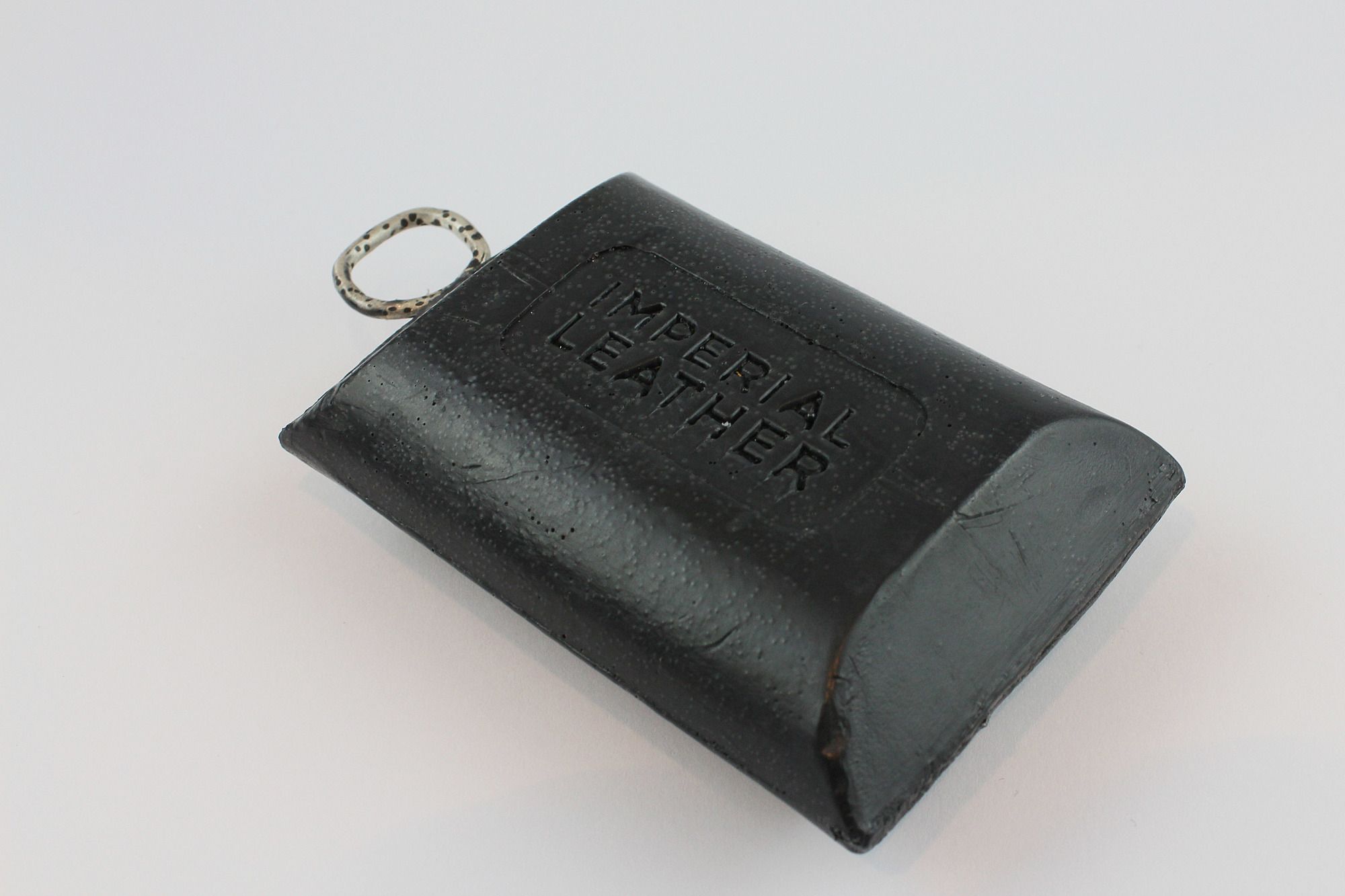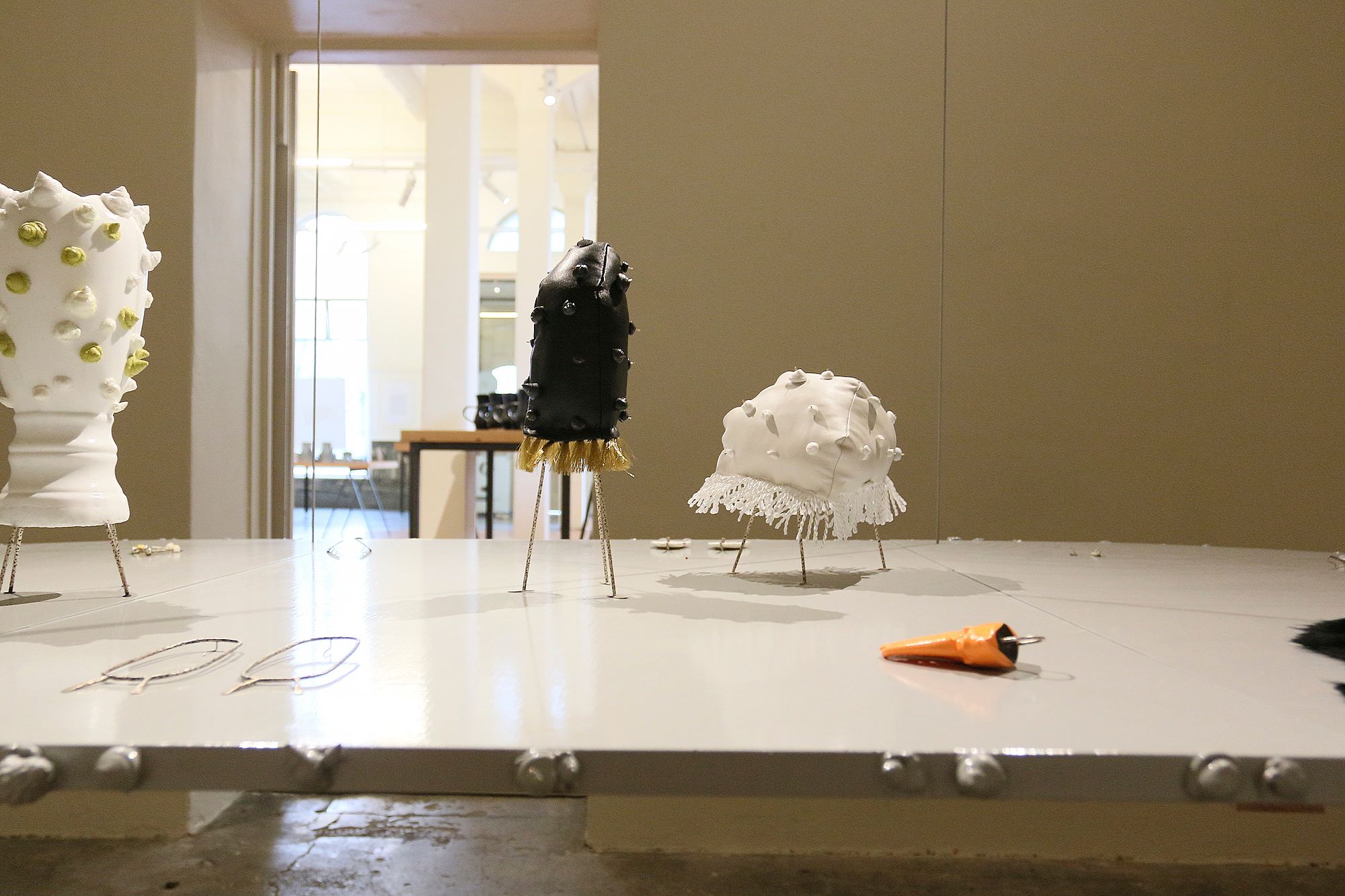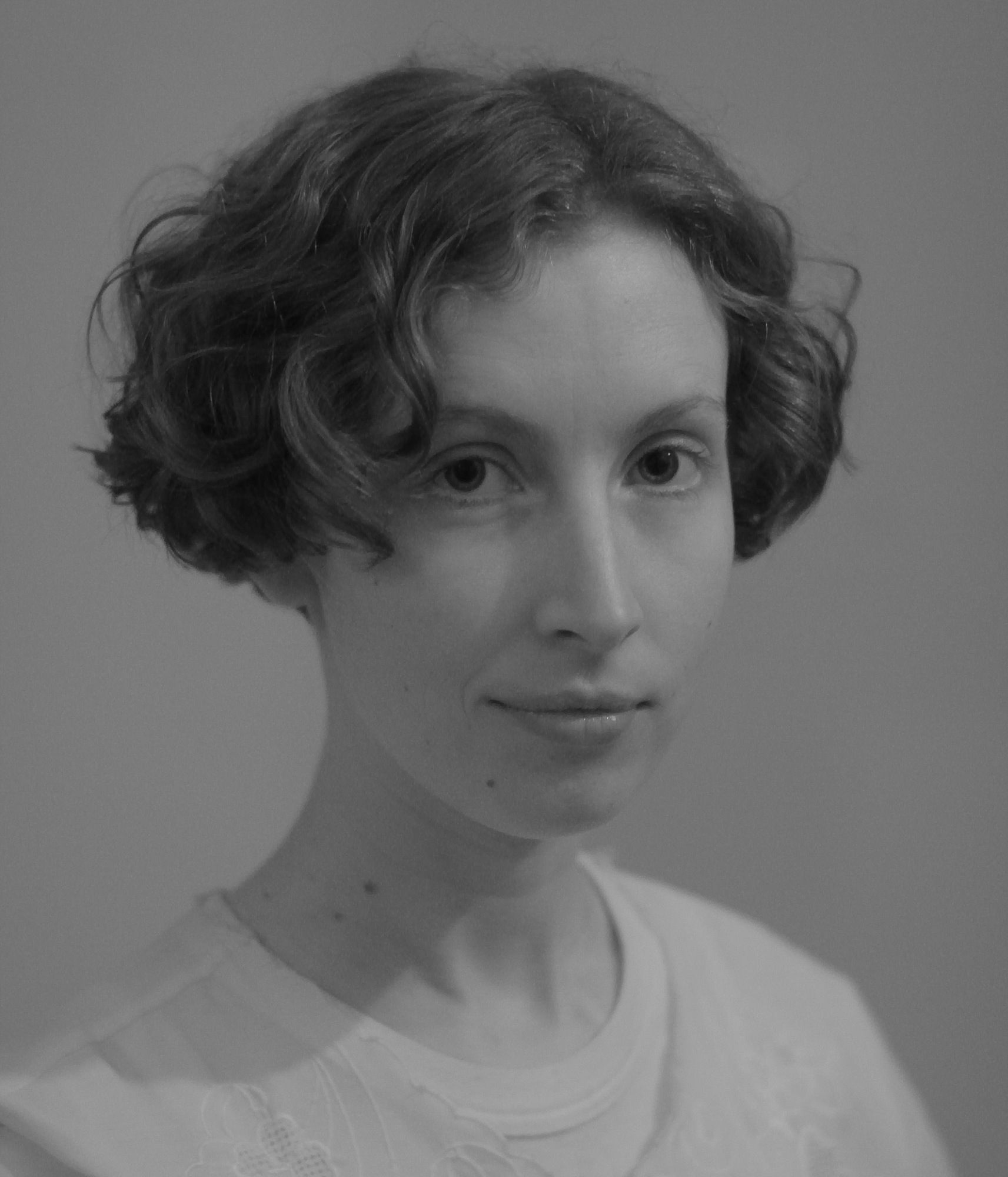To Hang Upon a Cheek: Chloe Rose Taylor's 'Still Life Forms'
Victoria Wynne-Jones discusses the aquatic-cosmic jewellery and objects of Chloe Rose Taylor.
Victoria Wynne-Jones discusses the aquatic-cosmic jewellery and objects of Chloe Rose Taylor.
The vault at Objectspace is presently home to Still Life Forms, an installation of jewellery and objects by Chloe Rose Taylor. Since graduating with a Bachelor of Applied Arts, majoring in contemporary jewellery, from Whitireia in 2013, Taylor has exhibited in solo and group exhibitions at public galleries and artist-run initiatives in Auckland, Wellington, Christchurch, and Melbourne.
For her current show, the artist has placed a series of items on a large grey shape suspended from the ceiling at roughly navel height. Tremulous and lit from above, the display structure slightly sways, affected by the currents of air created by beholders. Cunningly, as if from nowhere, a tinkling rendition of baroque piano music plays, transforming the vault into a walk-in jewellery box. Like a benevolent storm cloud, Taylor’s table-top-like form casts shadows, its surface coated in shiny, licked grey enamel, its thin sides studded with seashells.
If you hold a shell up to your ear you can hear the sea …
The shape, with its rounded corners, seems to encourage one to circumnavigate in a clockwise direction, gazing at each piece in turn, or in the context of its nearest neighbours. A little more than a dozen pieces dot the broad surface. Some are recognisable as jewellery forms, others are more ambiguous. The title of the exhibition echoes this ambiguity. On the one hand, it indicates the familiar arrangements of forms in seventeenth-century, western European still life paintings: a vase, a bibelot, a lobster, a shell … On the other hand, these objects might remain life forms, terrestrial or otherwise, animate and unknowable.
If you hold a shell up to your ear you can hear the sea. But it isn’t really the sea you hear, it’s actually the sound of your surroundings, amplified and resonating …
There is a ring, a single earring, pairs of earrings, and a familiar use of silver as a material for adornment. However, Taylor’s repertoire of materials is extended to include mother-of-pearl, tortoiseshell, and leather, as well as resin, cellophane, glitter, fringing, and acrylic. The shells and skins of animals combine with synthetic and manufactured materials. The hooks and clasps of jewellery are accompanied by more eccentric, almost fetishistic objects. A crowned, princess-like form, with a skirt of fringe, stands beside a black leather phallus. A granite T-bone steak lies upon black lamb-hide, thrown insouciant upon the display. A stuffed, white, glow-in-the dark form squats upon small legs. A transfiguration of the commonplace has occurred, there is a teetering of taxonomies as jewellery becomes object becomes creature.
Some of Taylor’s pieces make self-conscious reference to popular culture, artists like Tom of Finland and Keith Haring, well-known figures like Diana, Princess of Wales. This fandom could be interpreted as extending to children’s literature: a Lewis-Carroll-like crustacean claw, the magic beans of a fairy tale … The stony-steak on its bed of hide recalls characters from The Flintstones, with their strings of rock-like beads and hair swept back with bones. More mundane references point to a common bar of soap, wishbones, the stale water from a vase. Yet perhaps what is most prevalent is an allusion to microbiological forms: sea foam, spores, and cells – ones that cluster, divide, and spawn, in lurid colours, and with indeterminate edges.
If you hold a shell up to your ear you can hear the sea …
But the question is which sea? What kind of sea and where? From which planet, and in which galaxy? Many of the objects seem aquatic or cosmic in nature. They are made of shells, are creamy and pearly like bones or teeth, or have tentacles and spots. They seem to have been borrowed from a mermaid or lifted from an octopus’ garden. Some have the feel of artefacts retrieved or trophies won then mounted, yet there is also a hint of science fiction. The jewellery indicates the possibility that it has been salvaged from the craft of an intergalactic explorer. Compulsive, energised, and garish, the objects recall impossible crystals and mysterious concretions, as though Taylor has sought to produce an inter-dimensional cabinet of curiosities.
Once I held a shell up to my ear. To my terror, it was still occupied, and its inhabitant leaped through the shell into my ear canal, thinking it a more desirable abode. I’ll never forget the sensation of that small, squelchy creature trying to find a home inside my ear …
Returning to the seashell – a material and a form central to Still Life Forms, which becomes an emblem for ambiguity and openness. Shells have been used for counting and as currency, they have been used as adornment and ornament, but they are, in fact, tiny instances of architecture, their spinels and turrets designed to house non-human inhabitants. Then, too, a shell is like an ear, or the cochlea of an ear to be exact. And Taylor’s exhibition might be read as an exploration of things pertaining to the ear. There is the aural component of recorded music, a display structure roughly shaped like an ear, and suspended like an earring. Within the vault, the sounds of the gallery and the street beyond are muted, almost absent. There is a closeness and a lack of air. The large grey shelf with its slight list can create a sense of uneasiness bordering on seasickness … Once again, there is the inner ear and its importance to one’s sense of balance, equilibrium.
But most importantly there are Taylor’s pieces, which are captivating, witty, adventurous, and provocative. They transport one from the domestic to the imagined, from the mundane to the juvenile-fantastical, from the prehistoric to the zoological. From cartoons to art histories to flights of science fiction fancy. From the sub-cellular to the human biological to the inter-planetary, and back again.
Still Life Forms
Objectspace
26 May to 2 July 2016
Free admission

